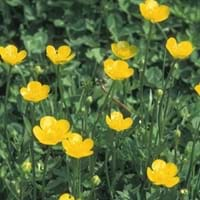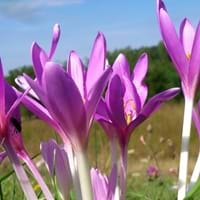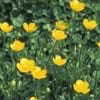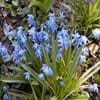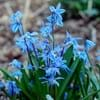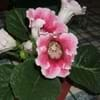Life Span
Perennial
Perennial
Type
Bulb or Corm or Tuber
Bulb or Corm or Tuber
Origin
Not Available
Mediterranean, Turkey
Types
Not available
Not available
Habitat
Banks, meadows, Roadsides, Shores of rivers or lakes
Lawn, meadows, Sunny Edge, Woodland Garden
USDA Hardiness Zone
Not Available
6-9
Habit
Clump-Forming
Clump-Forming
Flower Color
White, Yellow, Red, Green
Fuchsia, Rose
Flower Color Modifier
Bicolor
Bicolor
Fruit Color
Not Available
Not Available
Leaf Color in Spring
Not Available
Green
Leaf Color in Summer
Light Green
Light Green
Leaf Color in Fall
Several shades of Green
Several shades of Green
Leaf Color in Winter
Light Green
Light Green
Leaf Shape
Lobed and toothed
Long Broad
Plant Season
Spring, Summer, Winter
Spring, Fall
Sunlight
Full Sun
Full Sun, Partial Sun
The pH of Soil
Acidic, Neutral
Acidic, Neutral
Soil Drainage
Well drained
Well drained
Bloom Time
Not Available
Late Summer, Early Fall
Tolerances
Variety of soil types
Drought
Where to Plant?
Ground
Container, Ground, Pot
How to Plant?
Divison, Seedlings
Corms or bulbs, Seedlings
Plant Maintenance
Low
Low
Watering Requirements
Average Water Needs
Do Not over Water, Keep the ground moist but not water-logged
In Summer
Lots of watering
Lots of watering
In Spring
Moderate
Moderate
In Winter
Average Water
Average Water
Soil pH
Acidic, Neutral
Acidic, Neutral
Soil Drainage Capacity
Well drained
Well drained
Sun Exposure
Full Sun
Full Sun, Partial Sun
Pruning
Remove damaged leaves, Remove dead branches, Remove dead flowers, Remove dead leaves
Cut or pinch the stems, Remove damaged leaves, Remove dead flowers, Remove dead leaves
Fertilizers
All-Purpose Liquid Fertilizer
All-Purpose Liquid Fertilizer, fertilize in summer
Pests and Diseases
Powdery mildew
Slugs
Plant Tolerance
Variety of soil types
Drought
Flower Petal Number
Not Available
Single
Foliage Texture
Not Available
Coarse
Foliage Sheen
Not Available
Not Available
Attracts
Butterflies
Bees, Butterflies
Allergy
Pollen
poisonous if ingested, Toxic if not prepared properly
Aesthetic Uses
Beautification, Cottage Garden, Ground Cover, Landscape Designing, Showy Purposes
Beautification, Cottage Garden, Showy Purposes
Beauty Benefits
Not Available
Removes pimples
Environmental Uses
Air purification
Air purification
Medicinal Uses
Anodyne, Arthritis, Bronchitis, Nerve pain
Arthritis, Gout, Itching
Part of Plant Used
Flowers, Leaves
Bulbs, Flowers, Seeds
Other Uses
Used as Ornamental plant
Used as Ornamental plant, Used for its medicinal properties
Used As Indoor Plant
No
No
Used As Outdoor Plant
Yes
Yes
Garden Design
Bedding Plant, Container, Cutflower, Mixed Border
Alpine, Container, Mixed Border, Rock Garden / Wall
Botanical Name
Ranunculus acris
Colchicum autumnale
Common Name
Ranunculus, meadow buttercup, tall buttercup, common buttercup, giant buttercup
Autumn Crocus, meadow saffron, naked lady
In Hindi
Ranunculus
शरद ऋतु का पौधा
In German
Ranunkel
Herbstzeitlose
In French
Ranunculus
colchique d'automne
In Spanish
ranúnculo
cólquico
In Greek
Ranunculus
φθινόπωρο κρόκος
In Portuguese
Ranogkylos
aftomn gema
In Polish
Ranogkylos
aftomn żółtka
In Latin
Ranogkylos
aftomn vitellus
Phylum
Magnoliophyta
Magnoliophyta
Class
Magnoliopsida
Liliopsida
Order
Ranunculales
Liliales
Family
Ranunculaceae
Liliaceae
Genus
Ranunculus
Colchicum
Clade
Angiosperms, Eudicots
Angiosperms, Monocots
Tribe
Ranunculeae
Colchiceae
Subfamily
Ranunculoideae
Not Available
Difference Between Ranunculus and Autumn Crocus
If you are confused whether Ranunculus or Autumn Crocus are same, here are some features about those plants to help you choose better. Many people think that these two plants have the same characteristics, but one can see Ranunculus and Autumn Crocus Information and learn more about it. Fertilizers required for proper growth of Ranunculus are All-Purpose Liquid Fertilizer, whereas for Autumn Crocus fertilizers required are All-Purpose Liquid Fertilizer and fertilize in summer. Hence, one should know the basic difference between Ranunculus and Autumn Crocus if you are planning to have them in your garden to enhance its beauty.
<
Flowering PlantsImportance of Ranunculus and Autumn Crocus
Want to have the most appropriate plant for your garden? You might want to know the importance of Ranunculus and Autumn Crocus. Basically, these two plants vary in many aspects. Compare Ranunculus and Autumn Crocus as they differ in many characteristics such as their life, care, benefits, facts, etc. Every gardener must at least have the slightest clue about the plants he wants to plant in his garden. Compare their benefits, which differ in many ways like facts and uses. The medicinal use of Ranunculus is Anodyne, Arthritis, Bronchitis and Nerve pain whereas of Autumn Crocus is Arthritis, Gout and Itching. Ranunculus has beauty benefits as follows: Not Available while Autumn Crocus has beauty benefits as follows: Not Available.
Compare Facts of Ranunculus vs Autumn Crocus
How to choose the best garden plant for your garden depending upon its facts? Here garden plant comparison will help you to solve this query. Compare the facts of Ranunculus vs Autumn Crocus and know which one to choose. As garden plants have benefits and other uses, allergy is also a major drawback of plants for some people. Allergic reactions of Ranunculus are Pollen whereas of Autumn Crocus have poisonous if ingested and Toxic if not prepared properly respectively. Having a fruit bearing plant in your garden can be a plus point of your garden. Ranunculus has no showy fruits and Autumn Crocus has no showy fruits. Also Ranunculus is not flowering and Autumn Crocus is not flowering . You can compare Ranunculus and Autumn Crocus facts and facts of other plants too.
